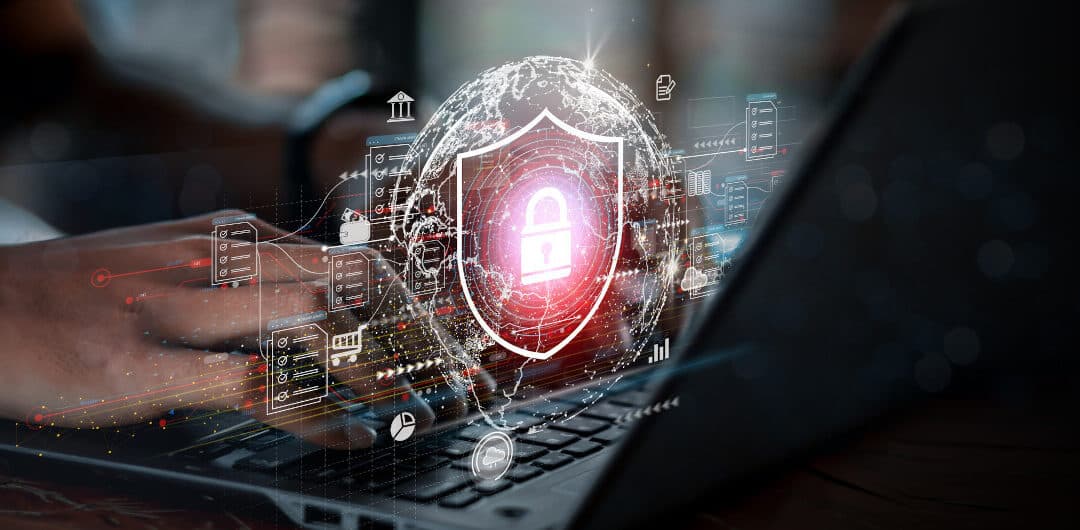The new era of remote work launched by COVID has given millions of employees the ability to work on their own terms and spend more time with their families. Unfortunately, remote work also comes with certain security risks, as organizations now need to guard against increased exposure to cybersecurity concerns with little physical oversight.
But embracing remote work does not need to mean handing employees’ laptops with sensitive company information and hoping all goes well. Organizations should establish an insider threat security team to mitigate risks and ensure the remote work environment is conducive to employee and organizational security and well-being.
Three steps organizations can take to establish an insider risk security team and safeguard their assets are:
- Implementing strategies to mitigate risk with limited resources
- Building an organization-wide culture of security
- Automating high-risk monitoring procedures with digital tools.
Establishing a comprehensive risk protection program can seem daunting, especially when it comes to anticipating and responding to cybersecurity threats posed by organizational “insiders”: employees, contractors, or business partners who have access to internal networks and proprietary information.
Organizations often lack the infrastructure or resources to consistently monitor the users and assets associated with internal risk. This means that it can take months to find data breaches caused by access abuse — during which time the economic and organizational costs of a leak can multiply.
But organizations don’t have to wait until they make it big to protect their assets from internal threats.
Use the Gartner’s “rule of three” to understand and mitigate internal risks
According to Gartner*, “to minimize insider risk, security and risk management leaders must make the best use of limited security resources by implementing the “rule of three” to mitigate risk effectively.” Gartner further states that the rule of three provides a simple yet practical framework, focusing on three core mitigation goals as an effective means to mitigate insider risk: threat type, threat activity, and mitigation goals. These break down as follows:
Threat Types
- Careless User
- Malicious Insider
- Compromised Credentials
Threat Activities
- Fraud
- Data Theft
- System Sabotage
Mitigation Goals
- Deter individuals
- Detect activity
- Disrupt effort
As Gartner explains, “To effectively mitigate insider risks, security and risk management leaders must think, act and behave pragmatically. The rule of three provides a simple yet practical framework focusing on the three core mitigation goals as an effective means to that end”.
Implement cross-organizational policies to foster an internal security culture
A security team that effectively anticipates and combats insider threats requires support from personnel across your org chart: not just IT but the legal team, HR, and managers.
Cross-organizational collaboration is essential in heading off the risks inherent in personnel changes: for example, employee or contractor terminations, voluntary resignations, or disciplinary procedures. A system that alerts managers, HR, and IT to significant changes in employee status allows leaders to anticipate and combat potential losses of intellectual property, leakage of sensitive data, or system sabotage.
When it comes to third-party vendors and partners, include provisions detailing company standards and policies around access and security in all contracts. Business leaders and legal should collaborate to develop procedures for addressing threatening scenarios with partner organizations while safeguarding mutual assets and the potential for future partnership.
Investing in employee education is another crucial strategy to preempt potential internal threats. Regular threat awareness training prepares employees to recognize suspicious activity. It should also provide them with clear and confidential ways to notify IT and management of potential dangers. Transparency in communication is key here. Be clear about the initiatives your organization is taking to protect its users and assets as well as the shared responsibility that organizational security demands.
A holistic and multi-functional approach is ultimately key to fostering a company-wide culture of security with sustainable, long-term returns.
Deploy digital tools to automate and optimize risk monitoring
When it comes to insider threats, an organization’s data is usually a point of vulnerability. Data is often the target of malicious insiders or the victim of careless users. But internal data is also a critical asset in pre-empting and combating the risks posed by inside actors, either malevolent or unwitting.
In addition to human-led prevention and mitigation procedures, an insider security team should invest in digital tools that mobilize internal data in the service of organizational security. Activity monitoring analytics and automated tools helps organizations detect threatening behavior across systems and data repositories.
Especially if organizations lack the budget or resources to invest in enterprise-wide monitoring, user behavior analytics tools provide CIOs with a data-driven means of identifying and prioritizing high-risk accounts. Tools like Veriato Cerebral automate behavior analysis across systems and platforms for multiple users, simplifying the time and personnel cost of maintaining human-led pre-emptive monitoring.
Establishing an effective insider security team requires a combination of human, institutional, and digital resources to anticipate and address risks to organizational integrity and proprietary data. But an effective and affordable approach to protection from inside is closer to home than many organizations might think. With effective digital tools and a comprehensive approach to threat mitigation, organizations can build sustainable infrastructure that anticipates and offsets risk while maximizing the value of internal resources.
*Gartner®, “The Rule of 3 for Proactive Insider Risk Management”, Paul Furtado, Jonathan Care, December 1, 2021.
GARTNER is a registered trademark and service mark of Gartner, Inc. and/or its affiliates in the U.S. and internationally and is used herein with permission. All rights reserved.

Insider Risk – How Prepared Are You?
Not every company is equally prepared to deal with insider risk. This report outlines the four stages of insider risk maturity and explores how to improve your insider risk preparedness.





